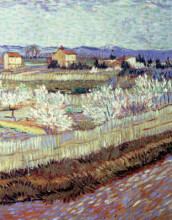Aquatic ecosystems - Chemical compounds
10 important questions on Aquatic ecosystems - Chemical compounds
Which factors determine the chemical composition of water?
- Exchange with the atmosphere, rainfall and transpiration
- leaves, sediment and processes in the water
- human activities
What are the zones of the saprobicity system?
-zone 1/polysaprobic: gross pollution; high molecular weight organic matter; little to no dissolved oxygen; abundant bacteria + other organisms; few species living on decaying organic matter/bacteria
-zone 2/mesosaprobic: simpler organic compounds; steadily increasing oxygen; upper zone contains bacteria/fungi/other animals and few algae; lower portion contains mineralization - for algae-intolerant animals- and rooted plants
-zone 3/oligosaprobic: zone of recovery; mineralization is complete, oxygen is back to normal; contains wide range of plants and animals
How does degradation of om lead to oxygen deficiency of a yellow-brown colour?
Yellow-brown colour = the creation of intermediate products like humic acids or fulvic acids
- Higher grades + faster learning
- Never study anything twice
- 100% sure, 100% understanding
What are intermediate products of organic material?
-fulvic acid
give yellow-brown colour to water
What are the most important nutrients in surface waters?
-nitrogen (N)
What classifications are used for determining the degree of eutrophication in aquatic environments?
-mesotrophic: more nutrient-rich (rivers and lakes with more populated catchments/rich soils/high erosion)
-eutrophic: highly enriched with nutrients (delta/by human activities)
-hypereutrophic: murky, highly productive waters in which many clear water species can not survive
What is an oxygen-depleted water system called?
What is the difference between oligotrophic and oligosapbrobic
oligosaprobic: water contains little organic matter
What is the effect of reduced fertilizer on N and P concentrations?
The P-concentration stays the same (soils have strong binding capacity for P).
Also N can be broken down (denitrification) whilst P is conservative.
When is CO2 produced in the water?
The question on the page originate from the summary of the following study material:
- A unique study and practice tool
- Never study anything twice again
- Get the grades you hope for
- 100% sure, 100% understanding





























